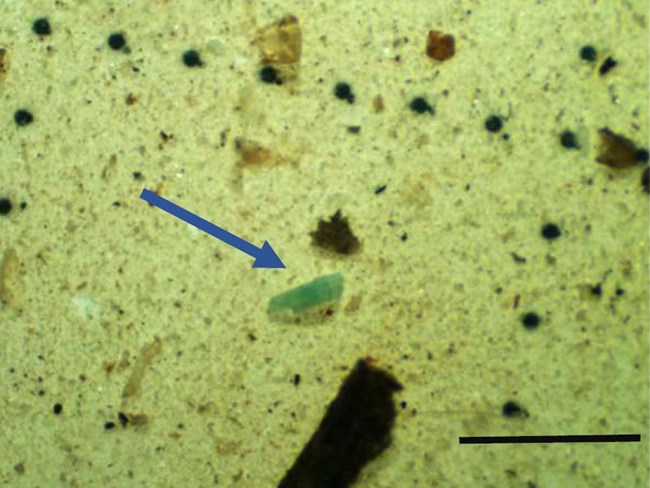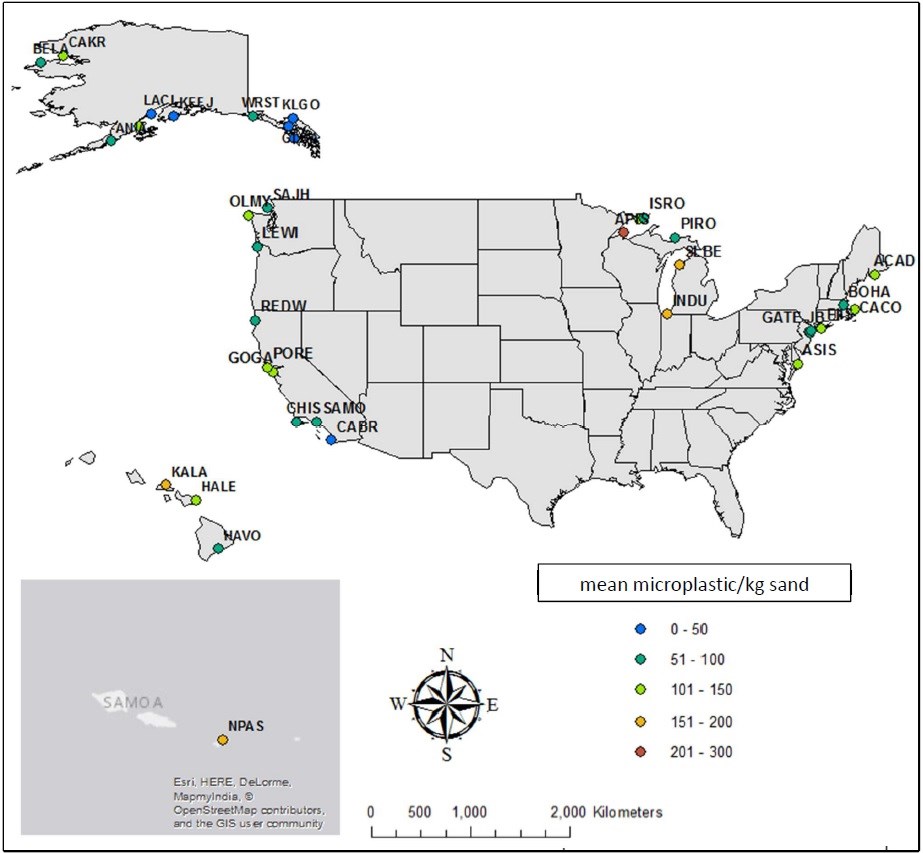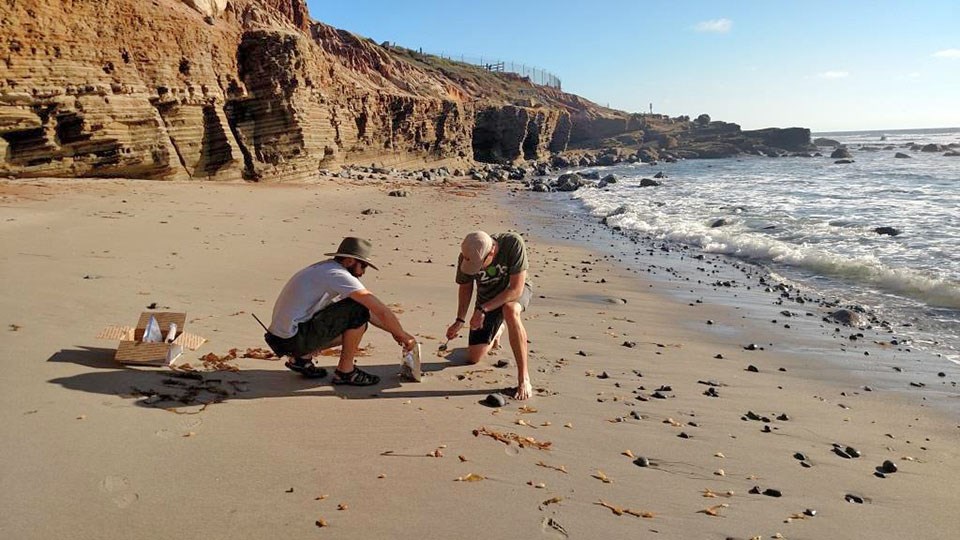Last updated: August 8, 2024
Article
Microplastics on National Park Beaches

NOAA
October 2017 - Every beachgoer has probably noticed plastic trash littering their favorite beaches, however remote. A new study of microplastic distribution on national park beaches indicates that whichever one you visit, there is probably also some amount of plastic that is harder to see, mixed in with the sand between your toes.
Microplastics are plastic particles or fibers smaller than 5mm in size. They can come from the the breakdown of larger plastic items, or they may been made intentionally small for inclusion it cosmetic or hygiene products. Synthetic clothing is a common source of microplastic fibers. Microplastics are an emerging concern because they can enter food webs, and from there, potentially human stomachs. On top of that, they often harbor concerning compounds from when they were manufactured, and/or that they have absorbed in their new aquatic environments. Much more research is needed to understand the risks of microplastics more clearly, but the implications of any negative impacts on organisms or ecosystems could be widespread.
This new study, funded by the NOAA Marine Debris Program and led by the National Park Service and Clemson University, provides a snapshot of microplastic concentrations at 37 beaches in 35 parks throughout the country. Microplastics were found on every beach sampled, nearly all in microfiber form. Certain Pacific Island and Great Lakes beaches had the highest concentrations, while some remote beaches in Alaska had the lowest. West Coast beaches had more moderate microplastic concentrations.

NOAA
Of the West Coast parks sampled, Point Reyes National Seashore and the Golden Gate National Recreation Area had the highest microplastic concentrations. This is likely related to the San Francisco Bay at their doorstep, draining a huge urban and agricultural landscape. Specifically, the beaches sampled at both parks had an average of 140 microplastic pieces per kg of beach sand, or about 50 pieces per one measuring cup full of sand. Since the study took samples from one beach per park at one moment in time, that is not to say that all Bay Area beaches have similar concentrations, or that concentrations don’t change over time. It is simply a piece of the broader picture of where microplastics are more or less prevalent on park beaches across the region, and the country, at the time of the study.
At the other end of the spectrum, Cabrillo National Monument in Southern California boasts an average of 39 microplastic pieces per kg of sand. This was both the lowest average concentration observed on the West Coast, and the second-lowest average concentration in the entire study, matched and exceeded only by two parks in Alaska. Why remains a mystery. It could be due to low sample size, ocean current dynamics, Cabrillo’s isolation from an urban outlet, and/or other untested variables.

NPS
The study findings show that other Southern California park beaches also had microplastic concentrations on the low side. Channel Islands National Park had an average of 56 pieces per kg of sand, and Santa Monica Mountains National Recreation Area had an average of 80.
Explore the Marine Debris in Coastal Parks Story Map to learn more, or dig in to even greater detail with the full report. If you find microplastics fascinating and want to check out other interesting work being done in the National Park Service, check out this recent report from the Great Lakes Network.
Prepared by the San Francisco Bay Area Inventory and Monitoring Network and the Mediterranean Coast Inventory and Monitoring Network.
